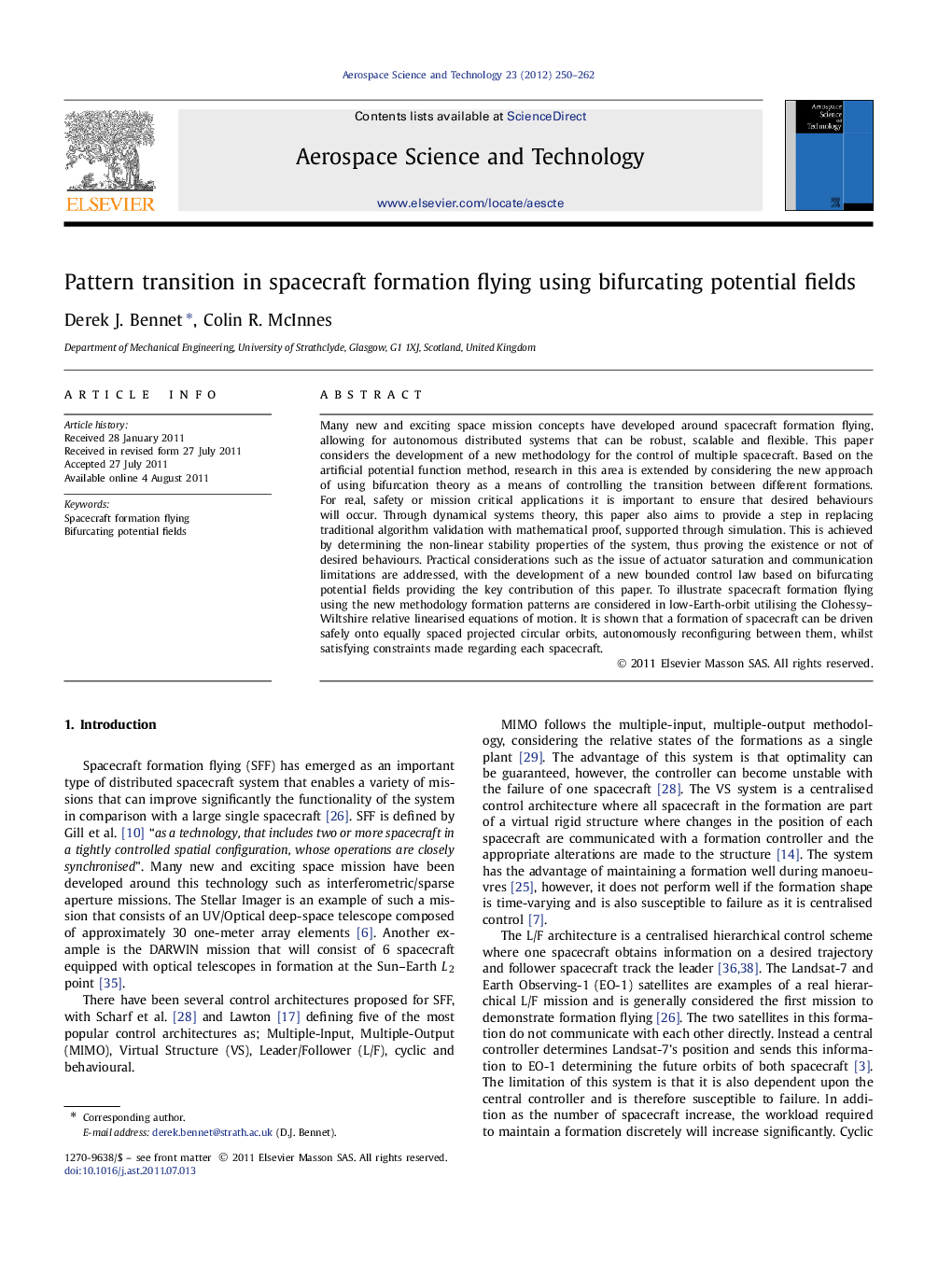| کد مقاله | کد نشریه | سال انتشار | مقاله انگلیسی | نسخه تمام متن |
|---|---|---|---|---|
| 1718366 | 1013839 | 2012 | 13 صفحه PDF | دانلود رایگان |

Many new and exciting space mission concepts have developed around spacecraft formation flying, allowing for autonomous distributed systems that can be robust, scalable and flexible. This paper considers the development of a new methodology for the control of multiple spacecraft. Based on the artificial potential function method, research in this area is extended by considering the new approach of using bifurcation theory as a means of controlling the transition between different formations. For real, safety or mission critical applications it is important to ensure that desired behaviours will occur. Through dynamical systems theory, this paper also aims to provide a step in replacing traditional algorithm validation with mathematical proof, supported through simulation. This is achieved by determining the non-linear stability properties of the system, thus proving the existence or not of desired behaviours. Practical considerations such as the issue of actuator saturation and communication limitations are addressed, with the development of a new bounded control law based on bifurcating potential fields providing the key contribution of this paper. To illustrate spacecraft formation flying using the new methodology formation patterns are considered in low-Earth-orbit utilising the Clohessy–Wiltshire relative linearised equations of motion. It is shown that a formation of spacecraft can be driven safely onto equally spaced projected circular orbits, autonomously reconfiguring between them, whilst satisfying constraints made regarding each spacecraft.
Journal: Aerospace Science and Technology - Volume 23, Issue 1, December 2012, Pages 250–262